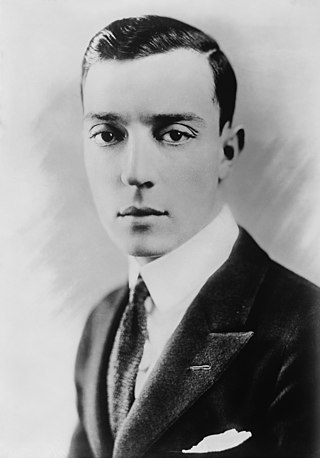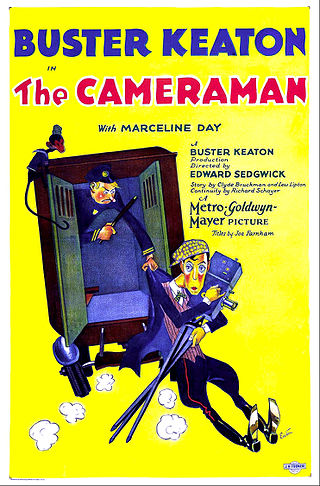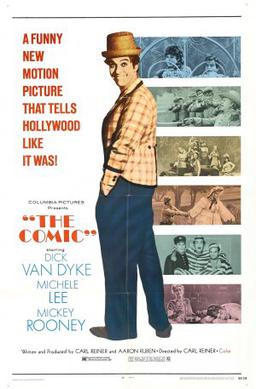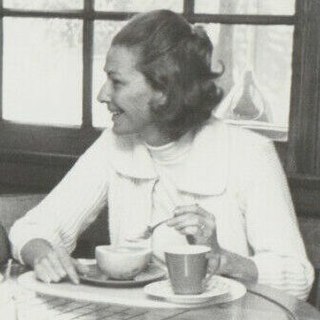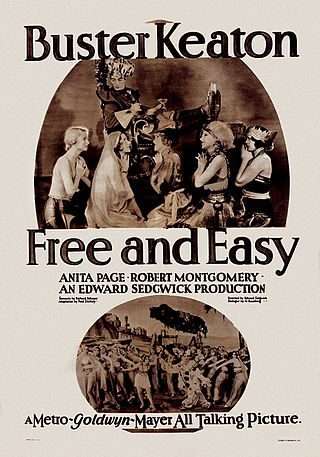Plot
In the late 19th and early 20th centuries, child vaudevillian Buster Keaton stays in boarding houses, rides in train boxcars, and performs with his mother and father in a knock-about (physical comedy) act called The Three Keatons. As a young man Keaton travels on his own to Hollywood and tricks his way onto the grounds of silent-film studio Famous Studio as a workman carrying a board, as in one of his trademark comic bits.
Sneaking onto a set, he attracts the attention of a young casting director, Gloria Brent. He demonstrates his type of physical comedy to a director Kurt Bergner, whom he does not impress. But Gloria recognizes his talent and recommends him to studio head Larry Winters, who offers him a contract. Keaton begins to get small parts in other people’s pictures. As his comic talent becomes more apparent and his fame and money-making power grows, he is offered a contract to direct and star in his own silent films.
Dissatisfied with not sharing the profits of his films, he is told that he must invest in his own pictures in order to profit-share. He does in “The Gambler”, which is released at the same time as Al Jolson’s blockbuster talkie, “The Jazz Singer”, reducing public interest in it. Buster struggles to adapt to performing in talking pictures.
He pursues a silent film star throughout his early career, Peggy Courtney, who sneers at his boarding-house manners and eventually marries a European Duke in order to become a Duchess. Crushed, Keaton begins drinking heavily. The casting director, Gloria, who has been interested in him and remained his friend throughout his career has been similarly disappointed by his lack of interest in her, and plans to marry a studio executive, Tom McAffee. Eventually, she confesses to her fiancé her continued interest in Keaton, and they break up. While Keaton is in a drunken black-out, she marries him in order to move in with him and take care of him so he doesn’t die.
Buster doubts Gloria’s motivation for marrying him and neglects and verbally abuses her. Things thaw between them; Buster has been offered a small part in a talking film by director Kurt Bergner. Buster quits the film in anger as he is not allowed enough screen time to develop any of his famous comedy routines.
On his way home Buster meets some children playing baseball and joins them, making up comedy bits within the game at which the children laugh. When he returns home, Gloria mistakes his elation from having made the children laugh for having gotten the motion picture part. Pretending to go to work the next day, Buster returns to the baseball field, which is empty. Some tourists recognize him and ask for his autograph. He pretends to have forgotten his wallet and borrows $10 from them, which he uses to get drunk.
Buster returns home drunk, and Gloria confronts him. He wonders aloud why she married him, and she declares her love for him. The children who played baseball with him arrive at his house to ask him to play baseball with them again. Gloria tells the children that he is sick and cannot play. Then she leaves Buster, hoping that leaving him will help him to face his drinking problem.
The children show up at Buster's house again, and he entertains them, but he falls down and hurts himself as he is still ill from drinking. He puts his mansion up for sale and moves out. He goes to see Larry, the studio head, to ask if he knows where Gloria is. Larry tells him that Gloria has resumed her old job at the studio; he calls Gloria into his office and leaves the two alone. Buster demonstrates to Gloria that he is quitting drinking, and tells her that he is returning to his roots, vaudeville. He tells her that she is free from the marriage.
Buster returns to vaudeville, where audiences still laugh at his routines. Gloria goes to see Buster backstage, and he impresses her into his act. Together, they are a hit. Buster tells Gloria that together they will be The Two Keatons. She raises three fingers to signal to him that they must be The Three Keatons, as she is expecting.

